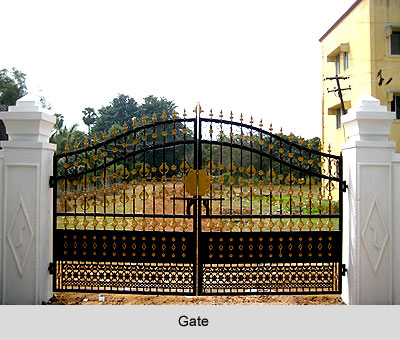 Once the compound wall is constructed it is time to build the gate of the compound wall. For this stricture too one can take aid of Vatu Shastra. This ancient architecture suggests certain tips to build the gate.
Once the compound wall is constructed it is time to build the gate of the compound wall. For this stricture too one can take aid of Vatu Shastra. This ancient architecture suggests certain tips to build the gate.
If the main entrance of the compound wall is on the east and the north sides it definitely leads to prosperity and fame.
If there are gates are on the east and the west sides this too results in happiness and riches.
The compound walls with gates on the north and the west sides bring only wealth. It has also been seen that they increase an individual`s interest in the spiritual aspects.
If there is a gate only in the east direction it leads to prosperity.
A northern gate symbolizes material comforts.
According to Vastu Shastra if the gate is in the west side of the wall then there will be a considerable profit in business. But this profit is short-term. After some years a lump will be experienced.
Remember to avoid the south side completely. Under no conditions should the gate be built on this side. It leads to hazards and difficulties.
If the compound wall is divided into 9 parts there should be a door towards the east from the north-east in the third or the fourth part. Other gates may be built in the fourth and in the fifth parts of the north side or in the fifth and sixth part from the north-west to the west side. Doors should not be built at all in the southern side. Entrance from the south-east side of the south is favourable to some extent but this works for women only.
It is always better to have two gates on the wall compound. Vastu Shastra reasons that if an evil force enters from one gate it can leave fro the other gate.




















